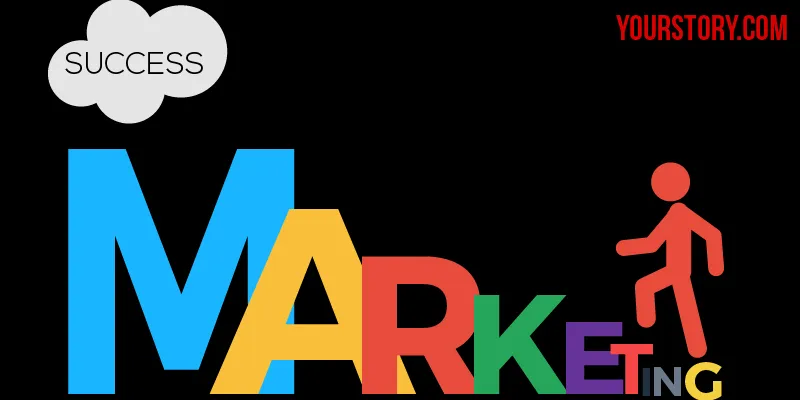The biggest marketing dilemmas answered in under 20 minutes
A slightly evolved marketer would nod along fervently to the fact that if you have multiple conversions on multiple platforms – like offline, desktop as well as mobile – it gets messy. Marketing today has gone really tech-based- after all, there are terms like marketing tech stack, tech-marketing being thrown around liberally, signalling to the next big wave. In this situation, the first thing that you want to do, when you want to rationalise how much money to allocate to each of your marketing channels, is attribution- it is a primary tenet of marketing. Here is a complete lowdown on how to pick the best attribution model for your brand, and how to rationalise your budget allocation to each channel.

Back to the basics
Same end, but different means
‘Attribution’ is basically attributing a conversion to a particular channel - or advertising and marketing campaign, to be more specific. The consumer journey begins at awareness, goes to consideration, advances to intent, eventually ending at decision, which leads to a ‘conversion.’
But the journey through channels, to a conversion, is different for different products. Consider looking for a hair transplant versus buying socks. You’d do a lot of research for the former, but none really for the latter. For the first case,a user searches how to prevent hairfall, lands up on a blog where he sees Dr X’s ad, does some more research, spends a week deciding before finally looking up Dr X directly and booking an appointment with him.
For socks, you simply search, see the Google ads set up through its adwords programme, open four to five tabs, pick the best ones, and make the decision. But perhaps you get lazy at the last stage and leave the check out midway. At a later stage – when you’re on a news website, the ad pops up with the same product you had chosen, which is a retargetting and remarketing tactic. So, you’re reminded that you do need to buy them, and make the final purchase.
If you attribute the sale to either the first or the last click while evaluation, in both cases – it will be inappropriate. Because, in the first case, the entire credit goes to the display ad which was shown to the user. In the second case, the retargetting sealed the deal. That is why attribution is not as simple as it seems.
Finding your attribution model
You need to find your attribution model –that is the channel to which your conversions must be attributed. This attribution can be different for a research heavy product and an intent-led product category. One model is the ‘last click model’ where the last click is the winner, for impulse-based categories. The other is a ‘first-click’ model where the first clock gets maximum credit – and then, there are various combinations, where you do a first and last combination.
“If you look at Google analytics, you are doomed. There has to be a multi-click attribution technique,which Google does provide. It is not something you get correctly at the first go,” says Suyash Katyayani, CXO at Purplle, at a Branch meet-up in Mumbai’s own Silicon Valley – Powai’s Of10.
Figure out your pathlength
A simple thumbrule is checking how many of your transactions are happening at a pathlength less than ‘2’. A path length of one is people directly coming to your website and buying your product, through only one campaign. But, there can be cases where you have multiple campaigns, like remarketing, display ads, emailers, until the user converts.
If that ratio is really high, then you need to have a multi-click attribution in place, with appropriate weightage given to the right channel. To start with, you need to give equal weightages to first, middle and last click. But going ahead, you need to analyse that with most of your converters, how important are the middle channels? If majority jump from the first click to the last, the middle channel may not be so important. You need to identify it for yourself – but the first and last click are very important.
Marketers everywhere agree that intent to decision is an easy journey, because once the consumer knows what they want to buy – like the socks – you just have to make sure your ad shows up. But awareness to decision is the most tricky – as you need to convince the user of your existence, use case, and then quality and value to make sure they convert.
Intent to decision is always a limited number – as in, the number of people who search for ‘buy socks online’ will not suddenly go through the roof. So, if you want to grow 20x, you cannot chart your growth plans based on increasing the intent, you must work on improving your brand awareness, like telling people, ‘if you want socks, we do keep socks are great prices’. Intent in your existing users will not go up dramatically, awareness amongst the new ones can.
The three key problems in attribution:
Cross-device
People have still not started doing transactions on mobiles.They may research for what they want on a mobile, because the device is handy when they get the impulse, but the final purchase is made on the desktop. Navigate through this problem, by enabling UID in Google analytics, which is a feature where you can identify every user based on their log-in ID, and then Google tells you which user first responded to your mobile first campaign, and then converted on your desktop. It will attribute those conversions appropriately.
View-through conversions
Your YouTube is full of ads at the side or on your video. You may not click on the ad,but end up going to the website of the product directly. Marketers, in this case, do not get the data. But, UID could save the day again. Google will do the math and tell you when the same UID that was logged in on mobile when your ad flashed is the same UID that eventually visited your website and made the purchase. You must activate the option of importing all the impressions and enabling cross-device conversions, so you can calculate the cost per acquisition of your campaign. But, if you do not do so, Google will not optimise the campaign for you, because you are not allowing it to link the impression of one campaign to conversion on another device.
Mobile apps being treated like a step child
"For companies that have apps as well as websites, it is common to say, “App ka data alag se dekhenge – which is not the right approach. You have to look at campaigns – no matter what the device or channel is – and attribute the success of a conversion to the right campaign,” says Suyash. As mentioned, a lot of customers are still using both devices heavily for the same transaction, and as far as the data today are concerned, every conversion is a joint effort between campaigns on desktop and mobile.
Learnings from Purplle’s marketing journey
Take control of your data
“What we realised was, you have to take control of your data – there is no way out. Especially for a company with a website, app and multiple conversions, looking at just the conversion numbers is not enough. We started storing all the events instead – a hit on the website, a product zoom, an add to cart –we started taking stock of everything, a registration, etc. Any campaign click is also an event – so, we homogenised the whole process to see how many events the campaign led to. We could slice and dice to any extent, to link the campaign to total activity on our sites. Bottom line – we started storing all the events,” explains Suyash.
Clevertap and Webengage are smart tools, according to him.
Look at the lifetime-value of a customer
“A sincere request is for you to stop going by just conversion numbers. Look at more - the lifetime value of the consumer‑in six months, how many conversions has the customer given,” says Suyash. Retention is another metric. Based on your product, decide if the client has come back after appropriate time has elapsed, to make yet another purchase. How many of your users are still active, how many still have your app? These are all important events to record and act on.
Lift tests
At a stage when you are evolved, to see whether your display ads and view-throughs are actually working, you can perform experiments like make the ad visible to only 80 percent of your target audience, and keep the remaining 20 unexposed. Then, record the behaviours in both groups, on various metrics like hits on your website, add to cart, etc. If the former group shows higher conversions compared to your latter, you know your campaign is working. The same goes for your non-clickable display ads. If you see a sudden spike in hits or inquiries, you know you must attribute it to your display campaign, even though the numbers may not tally.
Weed out ineffective channels
People discover you from another channel, come on your site, start to transact, see the coupon code option, then go to websites like CouponDunia, click on see deal – and come back. So, the last click becomes CouponDuniya, which is misleading. Diagnose this problem.
Another sign is if the time for carrying out a transaction is very low, you know you’re missing something while attribution. This could happen if, while checking out on an Amazon, one sees a plug-in like pricefountain ad – nothing but affiliate channels - with the listing of the same product on a Flipkart at a better rate – so, the user immediately clicks that and completes the transaction there.
Another metric is gauging the behaviour patterns of customers acquired from different channels – say, if you have a low performing customer from one channel compared to another, weed out the channel that is giving you only sporadic users. Work on sustainable growth which is organic.
Tips and hacks
- As a hack, Suyash has started looking at ‘last-click’as ‘purchase session initiator’ and accordingly reformed his strategy.
- App indexing:You must have ‘app indexing’ to become discoverable for people searching on Google. “These are low-hanging fruits. Through tools like Richsnippets, structured metadata – when you search for a product, the listing automatically appears with stars and a price,” explains Suyash.
- Google says it will be placing a lot of weightage on https websites. Suyash advices marketers to anticipate this wave and be prepared.
- Segment your buyers and target them differently: focus on buyers and prospective buyers.For example, classify them between regular buyers and buyers that have just transacted. For the latter, your objective would be to not make them buy again, but just engage with them. And identify the user patterns from prospective buyers. From the browsers, zero in on the people who showed more intent, buy zooming in and clicking the product description, and then work out a way to retarget them.
- Have very clear objectives and set goals for your business, which don’t necessarily have to be conversions, like getting a user to open the app, use it thrice, transact once, etc. After you have decided, work towards each goal using separate strategies.
- Deeplinking: another tip is to deeplink all your google adverts in a way that it leads directly to your app, if the user has it. Marketers hate this because Google will not be able to keep track and attribute once the user reaches the app, but you can use your own data to attribute it to the right channel. Purplle recommends Branch – which helps them to have a deep link for every page. If you are sending a blast SMS, for example, use deeplinks that lead directly to your app, or the specific product, service or scheme you are promoting – especially for the convenience of your loyal customers. “By the end of this year, there will be a beta test for Instant apps – apps, as we know it, will become obsolete. When you click an ad, a temporary SDK gets created, which lets you browse through it just like an app.And once you exit it, it self-destructs – like a website that simply closes. With these instant apps – deeplinks are a must,” concludes Suyash.










![[Funding alert] Venture Catalysts invests in wellness startup Green Cure](https://images.yourstory.com/cs/2/70651a302d6d11e9aa979329348d4c3e/Imagey8ho-1594190613192.jpg)
